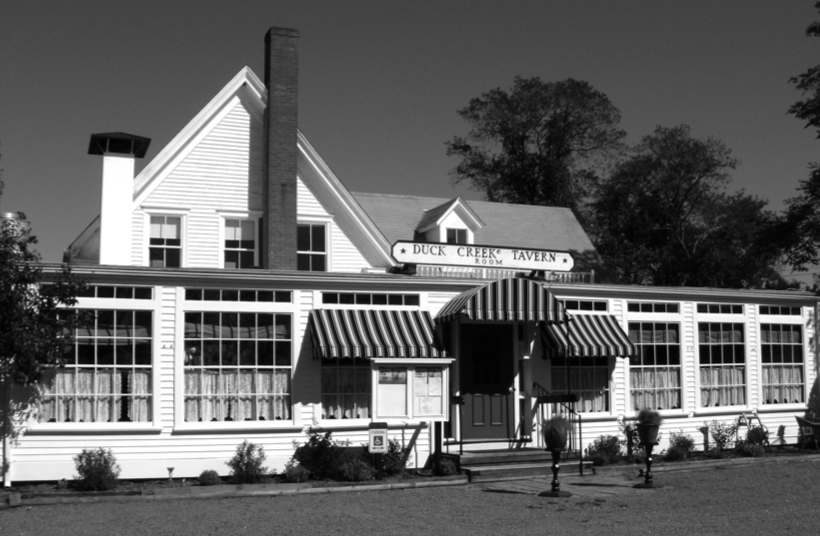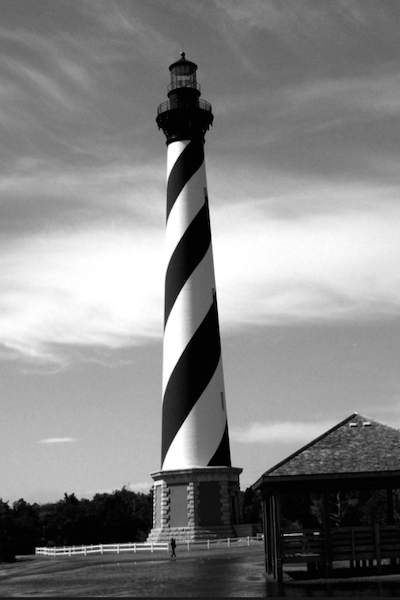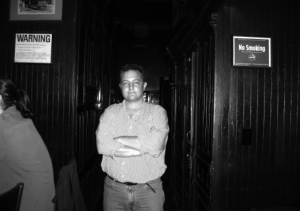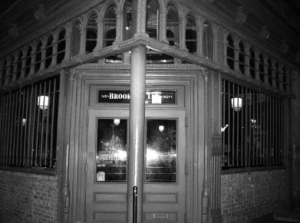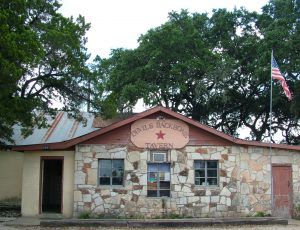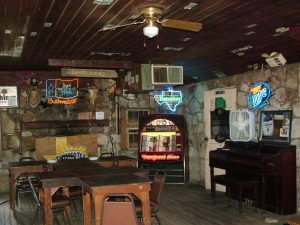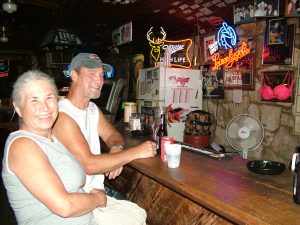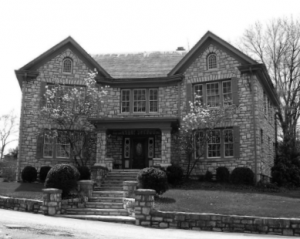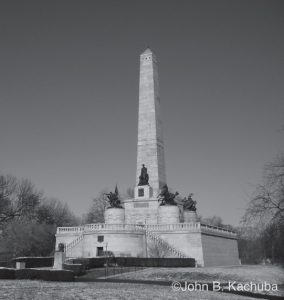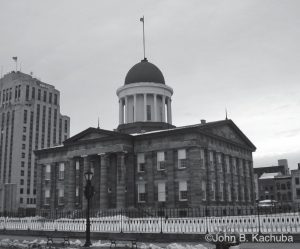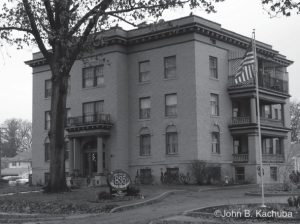
Andrew Lake, author of Ghosthunting Southern New England, explores the haunted Inn at Duck Creeke, one of Wellfleet’s unspoiled landmarks. Located on Main Street, the inn was originally built in 1810 as a home for a sea captain and his family.
The Inn at Duck Creeke is actually made up of four separate buildings. Along with the Captain’s House, there are three other buildings that occupy the five wooded acres. They are named The Saltworks House, The Tavern, and Carriage House. The tavern building is referred to as “The Hodge Podge” because it is made up of sections of homes from the seventeenth and eigh- teenth centuries. This uniquely styled building houses both the Sweet Seasons and The Duck Creeke Tavern restaurants.
The Duck Creeke Tavern is the oldest existing tavern in Wellfleet. The current owners of the inn are Bob Morrill and Judy Pihl. Bob and Judy first became associated with the inn in the mid-1970s when they were leasing the Sweet Seasons restaurant. In 1980, they bought the inn. Shortly after Bob and Judy had settled into the property, the ghosts made their presence known to them.
It was December 1980—the couple’s first winter on the property. They were living in The Saltworks House, which is located about 100 feet from the back of the Captain’s House. Bob and Judy were getting ready to prepare their first lobster dinner in their “new” home. Judy needed a large pot to cook the lobsters in, so she sent Bob to retrieve one from the kitchen of the Sweet Seasons restaurant. It was a cold, dark night as he walked up the lane, flashlight in hand, and entered the kitchen from the back of the restaurant. Bob recalls, “I was walking through the kitchen and a large, metal, one-gallon measuring can flew off the shelf. It didn’t fall on the floor; it flew all the way across the kitchen in front of me and then rolled another 20 feet. I grabbed the pot and went back home to Judy and said, ‘That’s the last time I’ll go in there after dark, alone!’”
The ghost of Eulalia, wife of Joe Price, may have been responsible for that flying piece of kitchenware. People who remember Eulalia say she was a serious, hardworking woman. She managed the hospitality side of the inn’s business and was responsible for booking all the entertainment. Mrs. Price was from New York and had a background in the theater. Well into the early 1970s, she wore long, old-fashioned dresses that were starched and ironed to perfection. A woman who worked for Mrs. Price told Judy Phil that Eulalia was the kind of manager who would line her staff up for inspection and count the number of peas on the plates. “She was a strong character. This was her place; this still is her place,” says Judy.
Mrs. Price is believed to be the woman in white who has been seen at the restaurant and its kitchen. Judy saw her ghost one afternoon in the lobby area of the restaurant. She says, “I just happened to be walking through the kitchen, looking out towards the lobby and something caught my eye. I took two steps back. I then watched a very diminutive woman float from one side, with the sun behind her, cross the lobby and back again, and then disappear. It was three-dimensional; you could almost see through it, and it was female.” Judy finishes by saying, “It was a very interesting moment.”
At the other end of the “Hodge Podge” is The Duck Creeke Tavern. Even though these two restaurants are attached, there seems to be a different group of ghosts in The Tavern Room. Over the years, Bob has learned of three deaths that occurred on the property. Two of those deaths happened inside the Tavern Room. Years ago, when the tavern was called The Chart Room, a husband-and-wife musical act used to play there regularly. One night while they were performing, the wife died on stage. The late singer’s husband would come to the Tavern Room in his later years and just sit and watch the stage. He would never order anything to eat or drink; he wouldn’t even ask for a glass of water. Judy used to wonder if maybe he could see his wife on the stage. A female ghost has been seen around the Tavern Room, and most feel that it is her spirit.
Musicians have reported hearing a woman singing while they were performing. One night when a piano player was on stage, Bob noticed that he was moving his head around and swatting at the air with his right hand. When he took a short break, Bob asked him why he was jerking his head and wav- ing his hand around. He looked at Bob very seriously and said, “Because she was pulling my hair!”
Oddly enough, the woman’s death isn’t the only one to have played out on the tavern’s stage. A piano player also passed away suddenly while performing. If this pianist is haunting the stage, he might be responsible for the microphones and amplifiers being turned off while musicians are playing.
The third death known to have taken place on the property was first reported to Bob and Judy by one of their former waiters, a young Irishman named Eugene, who was a “sensitive” who could feel and see things that others could not. One vision in particular that he told his employers about was seeing a man hanging himself from a large locust tree in back of the tavern. Bob had cut the locust tree down 10 years before this young man had started working for them. In June of 2010, an old man stopped by the Tavern Room and while reminiscing about the summers he had spent in Wellfleet as a boy, he mentioned that his college roommate’s father had hanged himself from a tree on the property. Bob and Judy said they had never doubted Eugene, especially when he told them that their inn was haunted by many ghosts.
The Saltworks House is the oldest building on the property. It was built in the early 1700s and was originally located by the harbor. The house is named for the grinding stones that were taken from an old salt mill and used to make its front walk and steps. The couple no longer lives in the house; it now contains five small guest rooms. During the years they did live there, Judy said she would sometimes hear the sound of someone walking around, softly, upstairs. On more than a few occasions she heard what sounded like beads from a broken necklace bouncing across the floor, but she could never find the source.
One season, some guests who were staying on the ground floor of the Saltworks House complained about the patter of little feet in the room above theirs. Another time, a couple had commented on hearing a baby crying in one of the upstairs rooms. A check of the inn’s register and a quick word with the staff confirmed that there were no infants or children staying in the Saltworks House when these sounds were heard.
The Captain’s House has at least three ghosts, and they seem to be the friendliest of all the phantoms. Bob and Judy are pretty sure they are the wife and two daughters of the sea captain who lived in the house. As far as anyone knows, the two daughters were seen only once, but are often heard moving about on the second floor. The Captain’s wife is reported to appear as a beau- tiful woman in white and also appears to be a kind soul. In the early 1980s, a female guest awoke with a scream when she found a strange woman in her room. This woman glided across the bedroom, through the furniture and up to the guest. She then placed her hand on the frightened woman’s shoulder and said, “Don’t worry, everything will be all right.” The guest was able to go back to sleep, but she checked out in the morning.
About a year after that incident, the inn got a phone call from a couple who recently had stayed in The Captain’s House with their 4-year-old daughter. They wanted to know the identity of the woman whom their child kept talking about. The young girl told her parents that a nice lady, dressed in white, had talked to her in their room. This woman wanted to make sure the little girl was taking her medicine. The couple couldn’t understand this because their daughter was not on any medication. The bemused innkeepers told the couple about the other guest’s encounter and left it at that. As Judy says, “Our ghosts seem very comfortable here, and we are comfortable
with them.”
For more haunted stories from Southern New England, check out Andrew Lake’s book Ghosthunting Southern New England.
